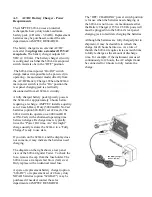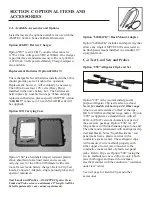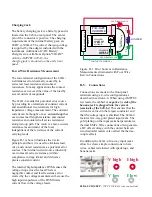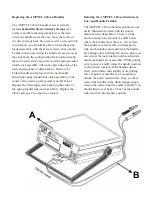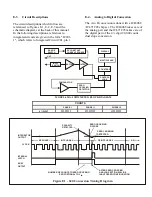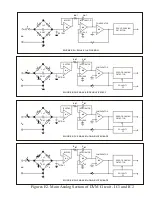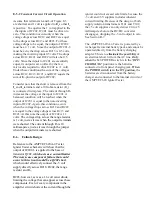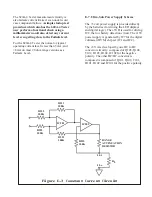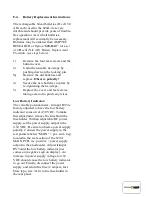
All AMPTEC ohmmeters use a high
impedance voltmeter as part of the
resistance measurement process. This
voltmeter is a highly accurate and stable 4½
digit analog-to-digital converter (A to D).
Unless it is receiving a definite input signal,
the output reading of this A to D is
ambiguous. The display may indicate a
randomly wandering number, or it may
indicate an overrange condition. This
unpredictable display may make it seem to
appear that the instrument is experiencing
some sort of malfunction. It is, in fact, just a
characteristic of the voltmeter circuit and
should not be mistaken for a fault in the
instrument.
The display indications should be ignored
unless there is a definite measurement being
taken. If this wandering display is not
acceptable, the ohmmeter can be made to
indicate an overrange condition whenever
the terminals are open by using a 4-wire
Kelvin type lead set or by shorting the V
HI
and I
HI
terminals together.
The display should indicate a stable reading
when the test leads are securely attached to
the device under test. If the display appears
to be erroneous when connected to a load,
recheck the test leads for integrity and
cleanliness. If all external items appear to
be functioning properly, the problem may be
the ohmmeter. In this case, please contact
your local AMPTEC RESEARCH Sales
Office.
D-6.
Failsafe Operation
The AMPTEC 620A-4 Series Igniter
Tester/Ohmmeter incorporate a proprietary
current source design that renders them
incapable of delivering excessive voltage or
current to the device under test. The
typical
fail-safe current for each range is indicated
under the corresponding range switch on the
620A-4 front panel. Please refer to section 5-
6 for a technical description of the failsafe
circuitry.
Every 620A-4 Series Failsafe Ohmmeter is
thoroughly tested before it leaves the
factory. Every resistance range is tested and
calibrated (a U.S. N.I.S.T. Certificate of
Calibration accompanies every 620A-4).
As a further precaution the 620A-4 is
isolated from the AC line whenever the
POWER switch is in the ON position.
The 620A-4 receives its power from an
internal rechargeable battery pack. The
620A-4 must be in the OFF/CHARGING
position to charge the batteries.
D-7.
Battery Monitoring Circuitry
If the low battery indicator LED is
continuously illuminated, readings should
not be trusted. An overnight recharge
should be performed before using the
620A-4 for critical testing.
It is possible for the user to receive a low
battery indication on a single range only
(particularly the 20 ohm range), while the
620A-4 remains well within operating
limits
on other ranges.
Unless the user observes a
continuous low battery indication during
measurement, readings are still valid.
Notice for Cal Lab:
The variable
potentiometer - trimpot RV3 is factory
adjusted to have the low battery indicator
come on at 4.50 VDC. To make this
adjustment,
refer to Section F
Routine
Maintenance for further details.





